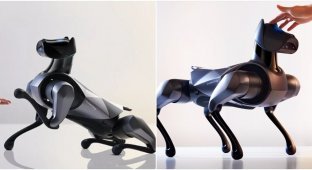Vintage technology: the first robots of the 20th century (24 photos)
The 20th century ushered in an era of technological progress, including progress in the field of robotics. Experiments from the beginning of the century, even the most strange, laid the foundation for the development of the first industrial robots and further automation of production. Modern androids are one way or another descendants of these ancient and clumsy pieces of iron! 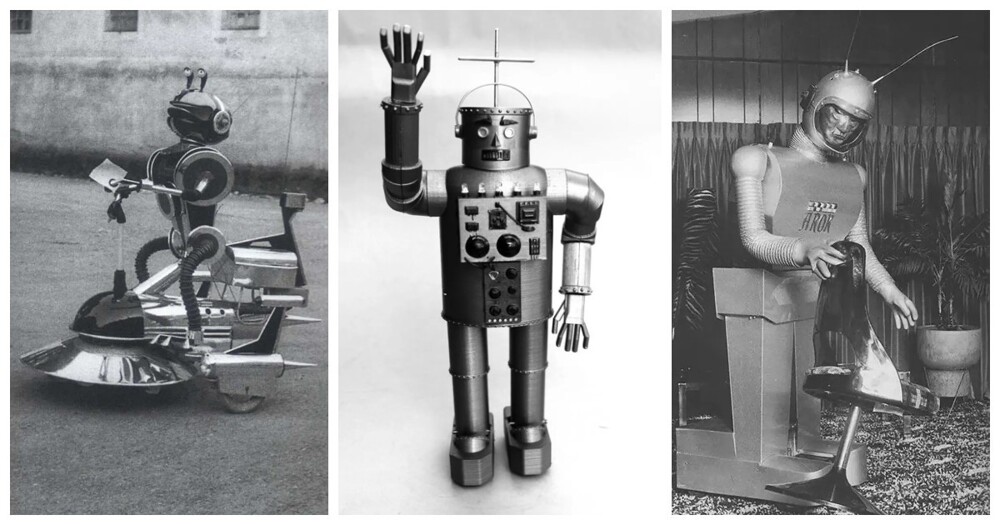
Steel humanoid robot Yasutaro Mitsui (1932) Tokyo, Japan 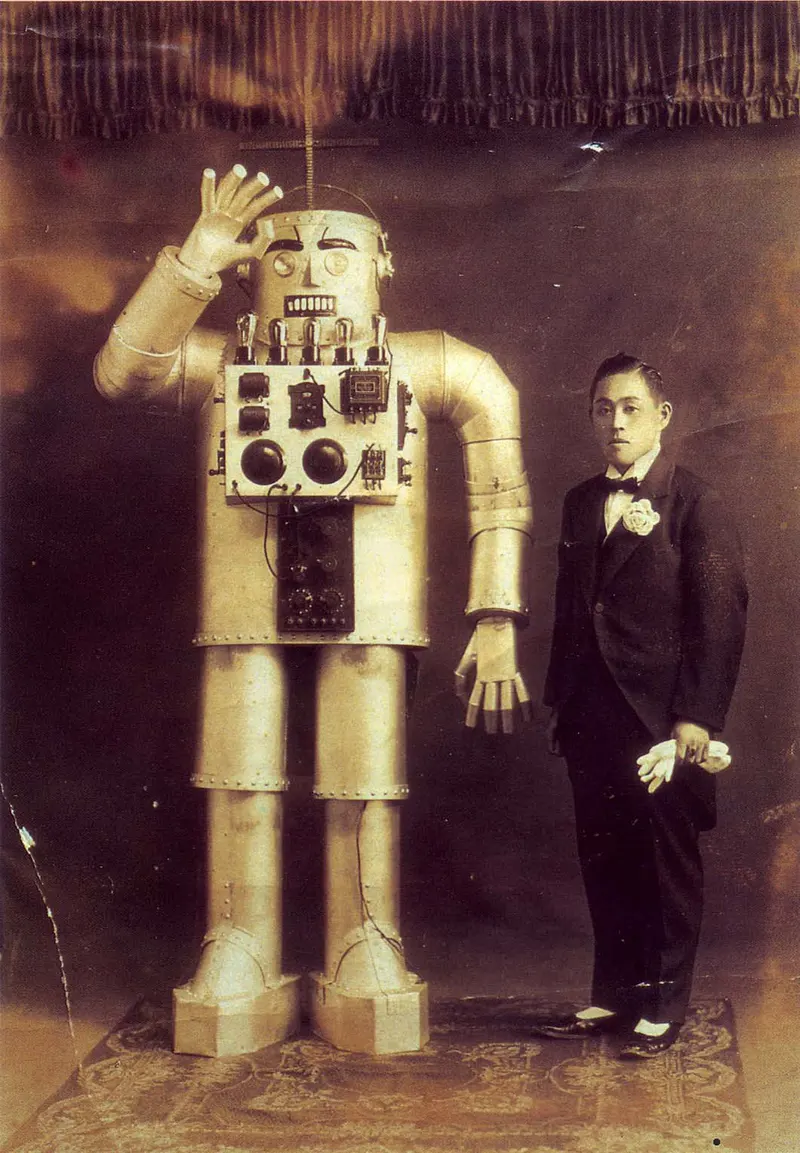
Humanoid robot Yasutaro Mitsui is one of the first Japanese humanoid robots. Photos taken from Haruka Inoue's book 1993 year under the title "Nihon Robotto Soseiki 1920-1938". Visible the robot's electrical parts and valves seem to be designed more for external surroundings and do not provide functionality. A similar design in which the inner workings are revealed, which later became standard feature of Japanese robots and toys. 
When we take a closer look at the Mitsui robot, we see that he could hardly move. There are no wheels on his legs, but the shape of his legs suggests that he cannot walk. On the upper part of the legs there are marks hinting at a possible bow, which has an important meaning for Japanese culture.
The fingers and neck cannot bend, and the arms can only move up at the shoulder and rotate at the elbow. We also see the power cord going up the left leg.
Robot El Chispas, Spain (1953) 
Antonio Gual from Barcelona says: “In the 1950s, my father, Antoni Gual Segura, and his colleagues at the local radio station Radio Vilafranca made a joint effort to design and create wonderful creation known as "El Chispas" (translated as "Sparks") This ingenious creation boasted the ability move his hands and talk, and somewhere in the navel area he had a window through which one could admire the charming sparkles. Performance of "El Chispas" during the Fiesta Mayor in 1953 year caused a real sensation, leaving an indelible impression on those present."
Robot Superman Dennis (1939) 
In 1939, British inventor Charles Lawson created "Superman Dennis", a robot 2 meters tall. It was stated that this the robot can do many different things, such as control traffic, singing, lighting a cigarette and smoking it, as well as sit or stand. Simple, but tasteful! Robot Dennis stressed creative spirit of his time, showing how machines could imitate human actions and contribute to the solution of various problems.
Mobot (1961) 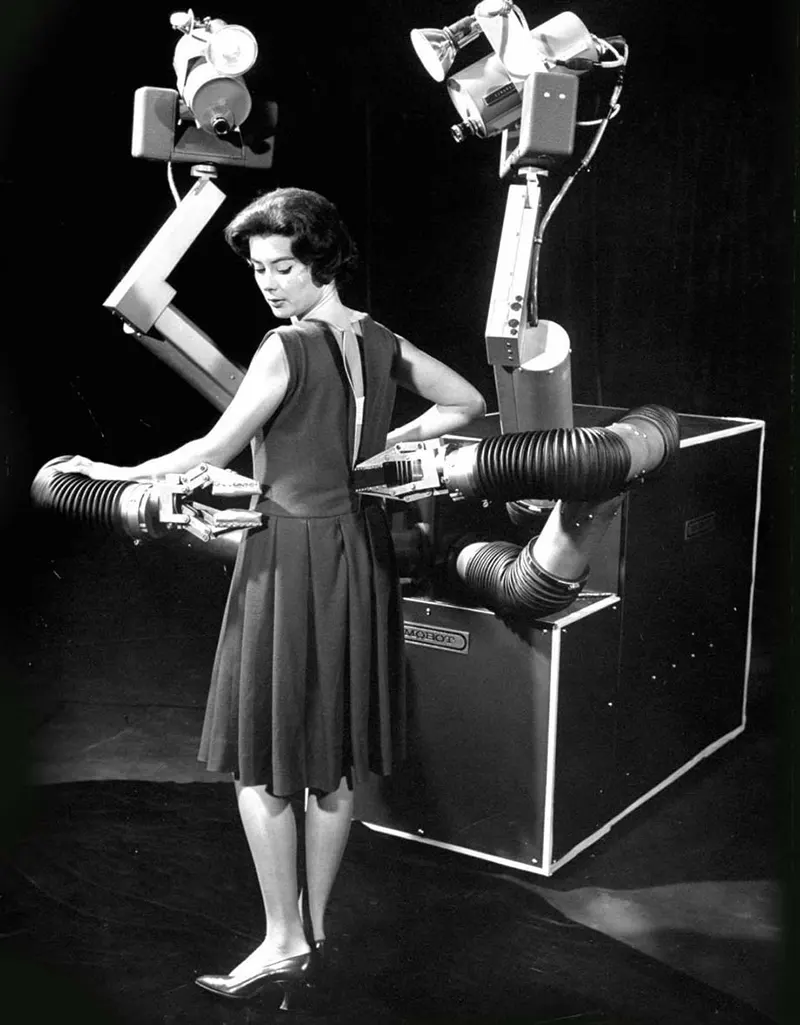
It's 1961 and Hughes Aircraft Electronic Labs decided to revolutionize the world with a great robot assistant Mobot.
Mobot was slightly larger than several refrigerators combined, and this mechanical miracle was supposed to automate every critical task in your life. He had to help for example, painting your nails, zipping your dress, or combing your hair. 
The goal of the project was to develop a mobile robot that could would move and perform tasks autonomously. Mobot was created to demonstrate the potential of robotics in various applications, such as observing, exploring, and perhaps even performing tasks in hazardous environments.
The project likely included the use of sensors, computing systems and algorithms that allow the robot to feel environment, make decisions and move without direct control person.
NASA space suit test robot (1965) 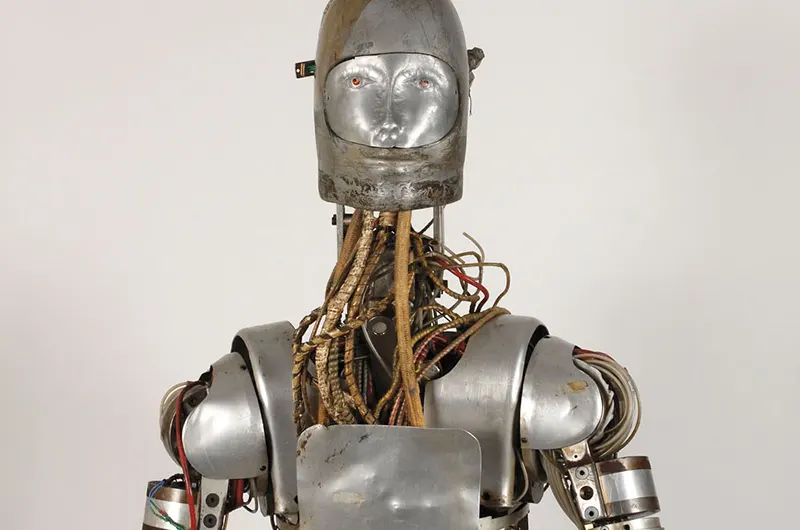
Before sending people to the moon, NASA wanted test prototypes of astronaut spacesuits on a humanoid robot And such an android with a hydraulic drive was created... and even could function normally if not for its tendency to leak oils when using. The so-called project "Articulated mannequin with electric drive" lasted from May 22, 1963 to July 31, 1965. 
This is a development of the IIT Research Institute in Chicago. The robot could simulate 35 basic human movements and was equipped sensors on each joint to measure the forces acting on human body from the side of a sealed spacesuit. Movements robot mannequin were provided with hydraulic drives driven powered by oil that flowed through the "circulatory system" from nylon tubes.
The design allowed the android to rotate its hips, lift and lower your arms and legs, shrug your shoulders, clench your fists and even shake hands, but he could not withstand the pressure required to moving the robot's limbs without leakage.
Sepulka, robot tour guide, Soviet Union (1962) 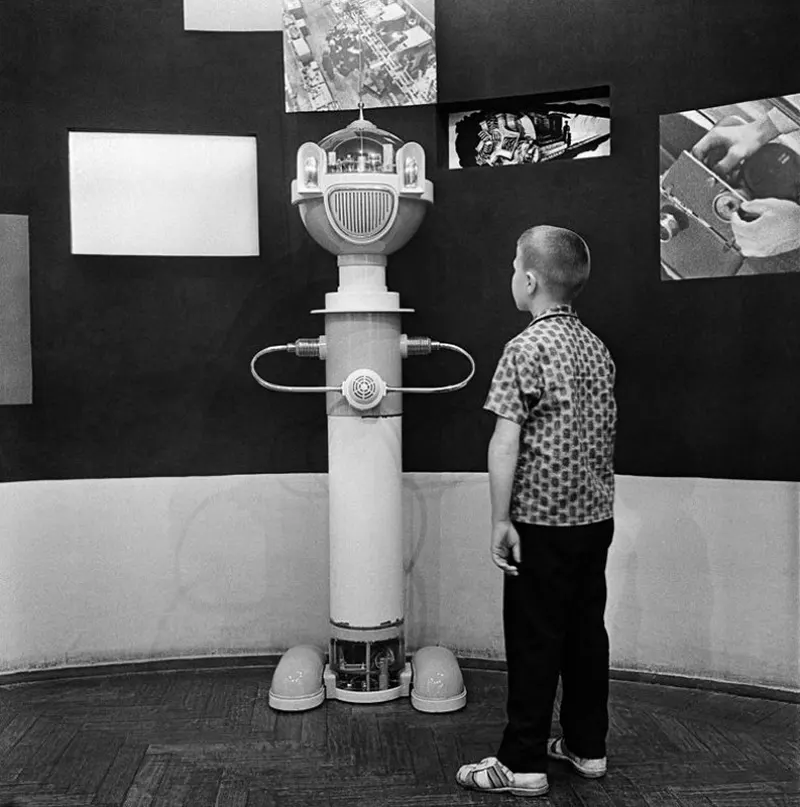
This robotic guide was developed in 1962 in experimental workshop of the All-Union Society "Knowledge" as a designer M. Alexandrov and artistic director M. Gorokhov, and then renovated in 1987. Used in the Polytechnic Museum.
Sepulka's speech is played back by a built-in tape recorder. The tape of the robot's movements is played back remotely via radio control from a distance of up to 20 meters.
Sepulka was named after the robot from Stanislav's stories Lema. Stanislaw Lem Sepulk's character was an object of unknown origin and destination.
Freddy Ford, a mechanical robot who answers questions (1960s) 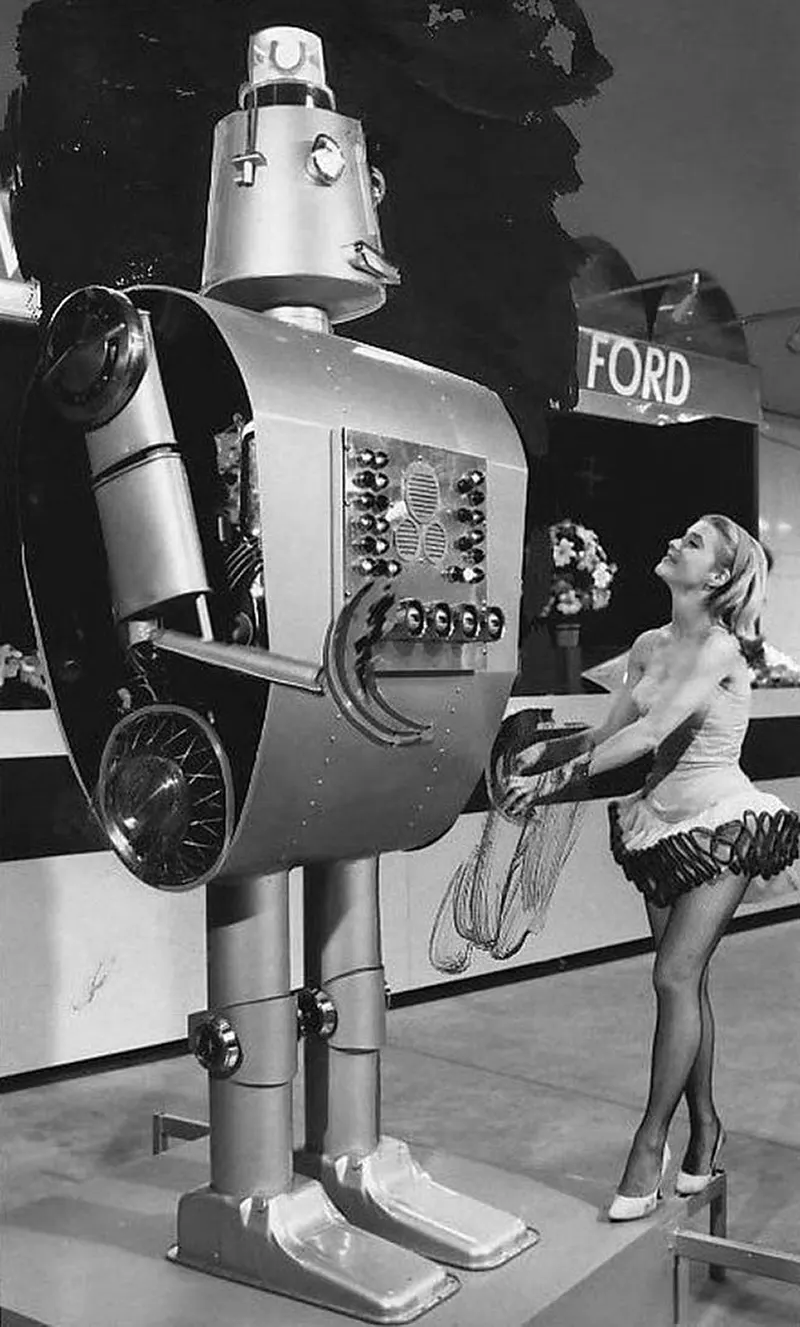
Made almost entirely from car parts, Freddy had a height of 2.8 meters and weighed more than 360 kg. Instead of legs he had oil pans, instead of hands - brake pads. His ears were made from radiator caps with car antennas attached to them. His eyes were the taillights of a Ford Mustang, and his mouth was a flashlight. reverse gear of the Ford Thunderbird. His hands were exhaust pipes and legs - shock absorbers.
Since 1967, Freddie has helped Ford sell cars at car shows. He was not very active, but he could answer a dozen questions “from the audience” from visitors. Not surprising, that most of his answers contained banal jokes and enthusiastic reviewed Ford products.
Robot Space, France (1958) 
"Move over, man." Even the most experienced Parisian it will be difficult for the driver to resist the instructions of the driver of this a kind of car.
But there is no extraterrestrial influence here; this is a robot, born and raised right here on Earth. Meet "Cosmos" a home-grown creation that stood next to a helicopter on a scientific exhibition on the banks of the Seine. Despite the carefree reputation of the French, "Cosmos" managed to attract significant attention.
Robo-Sensor, Japan (1982) 
A story about this miracle of technology in Weekly Reader magazine, issue April 23, 2, 1982 “A Japanese robot shakes a man’s hand while how special sensors in the robot measure grip and body temperature. The numbers are displayed and the robot may comment something like: “WOW, what a grip!” The robot can also measure room temperature and leaks gas."
Robot Goro, Japan (1964) 
In the photo we see Goro, a one and a half meter tall robot, developed by a toy research firm. He surrounded by schoolchildren in the Japanese capital Tokyo, February 29, 1964. Goro knows how to walk in all directions, bows to people he meets, winks at the girls and talks on the radio in his creator's hand.
Cygan (aka Gygan), Italy (1957) 
Cygan, a giant radio-controlled robot that is more half a century ago, he captivated the world, sparkling with eyes like automobiles. headlights, turning his head sharply from left to right and moving forward with at a terrifying rate, was sold at auction after was kept in a private collection for decades.
The machine, 2.5 meters high and weighing 450 kg, was shown on trade fair in Milan in 1957, the same time as space launched the first artificial Earth satellite, Sputnik 1. 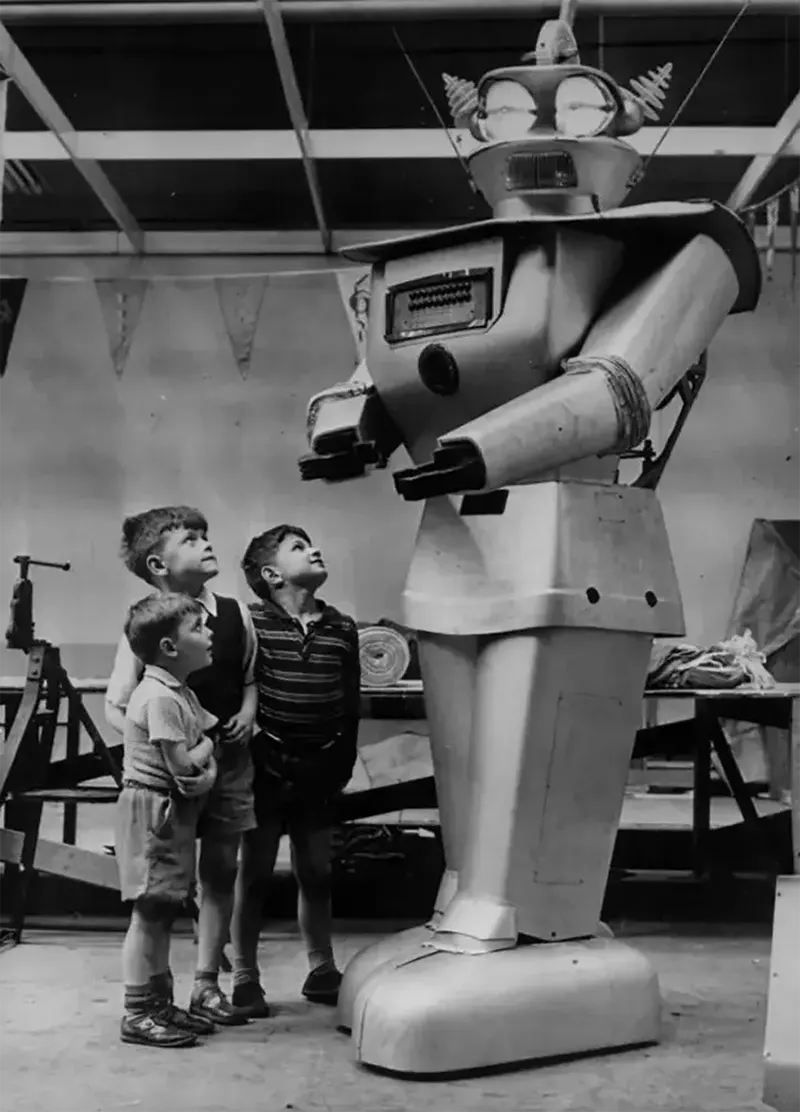
Designer Piero Fiorito, an engineer from Turin, confidently argued that his robotlooks like a "proud Englishman".
Robot Barbarossa (1909) 
Very little is known about this story. There is only a strange one photo and article talking about a robot named Occultus or Barbarossa, exhibited in Berlin in 1909 by Herr Adolph Whitman, famous German inventor.
“Whitman, after many years of work, managed to create a mechanical man who can walk, talk, sing, whistle and laugh. This mechanical masterpiece is so human that At a distance of a meter it is impossible to distinguish it from a living creature. Figure is a mass of intricate gears and mechanisms. In the chest several phonographs are located, but how the mechanism is controlled remains inventor's secret. They say that the basis of mechanical miracle lies wireless electric waves. Each part of the figure is controlled a small electric motor."
Unimate Robot (1961) 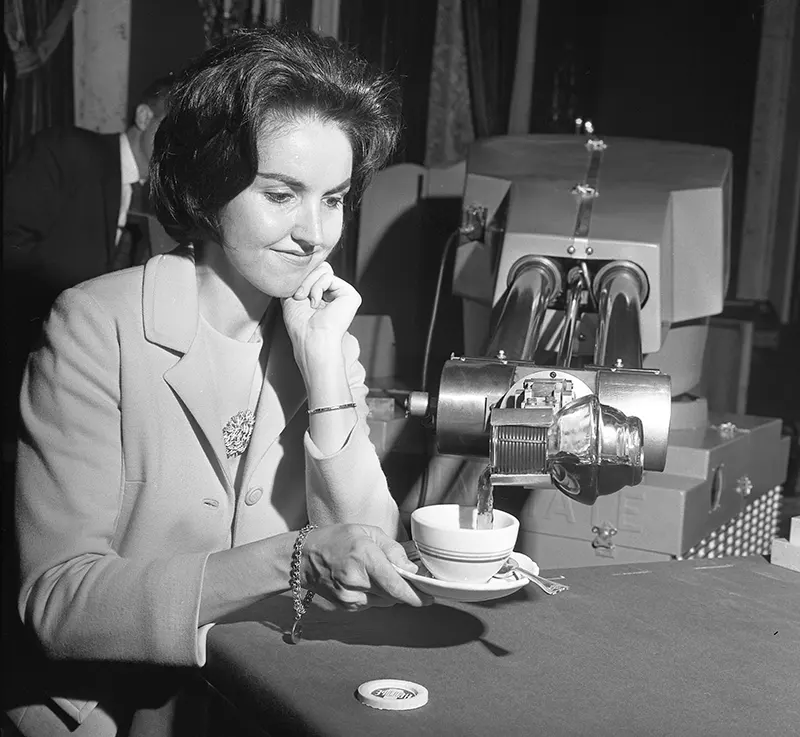
Unimate robot serving coffee, 1967
Unimate was the first industrial robot to work on General Motors assembly line at the Inland Fisher Guide plant in Ewing Township, New Jersey in 1961.
It was invented by George Devol in the 1950s based on his original patent, filed in 1954 and issued in 1961 year. The machine performed the work of transporting injection molded parts from the assembly line and welding these parts onto car bodies. This was a dangerous task for workers - they could be poisoned by poisonous in pairs or be injured due to negligence.
Eric, British Robot (1928) 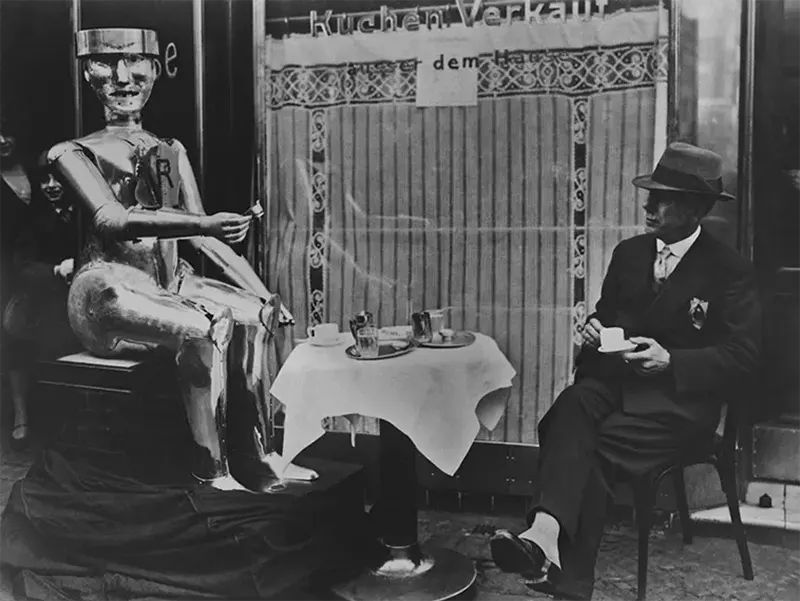
Eric Robot and his inventor Captain W.H. Richards.
Even British robots are having afternoon tea. Eric, the first British robot to ever exist, seemed believed that he had something to lead by example. He could turn his head and bow. Its inventor was named W.H. Richards.
Robot Arok (1970s) 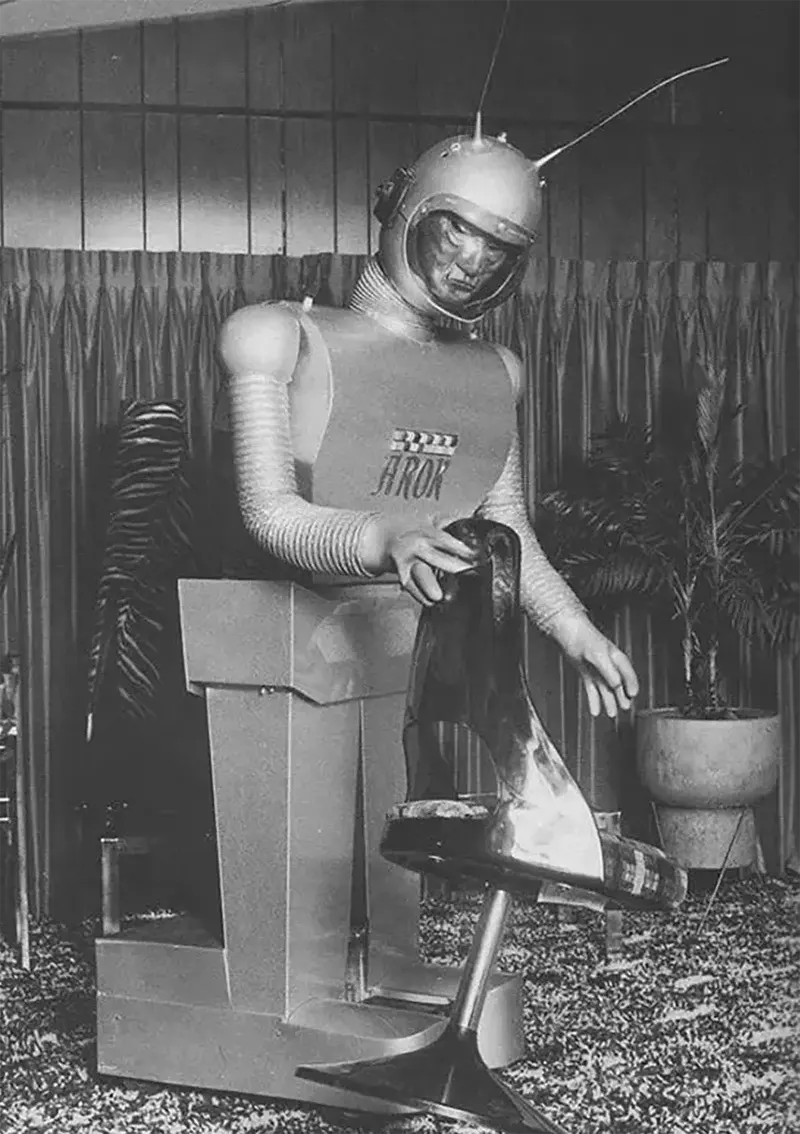
Designed by Ben Skora of Palos Hills. Robot AROK (surname Skory, written backwards, without the letter S), in working order could perform various tasks such as vacuuming, mixing drinks, talking, taking photographs, lifting weights up to 70 kg and walking the dog. He could also bend at the waist to a 45 degree angle and turn your upper body to the right and left. He could also “drive” at a speed of 5 km per hour. 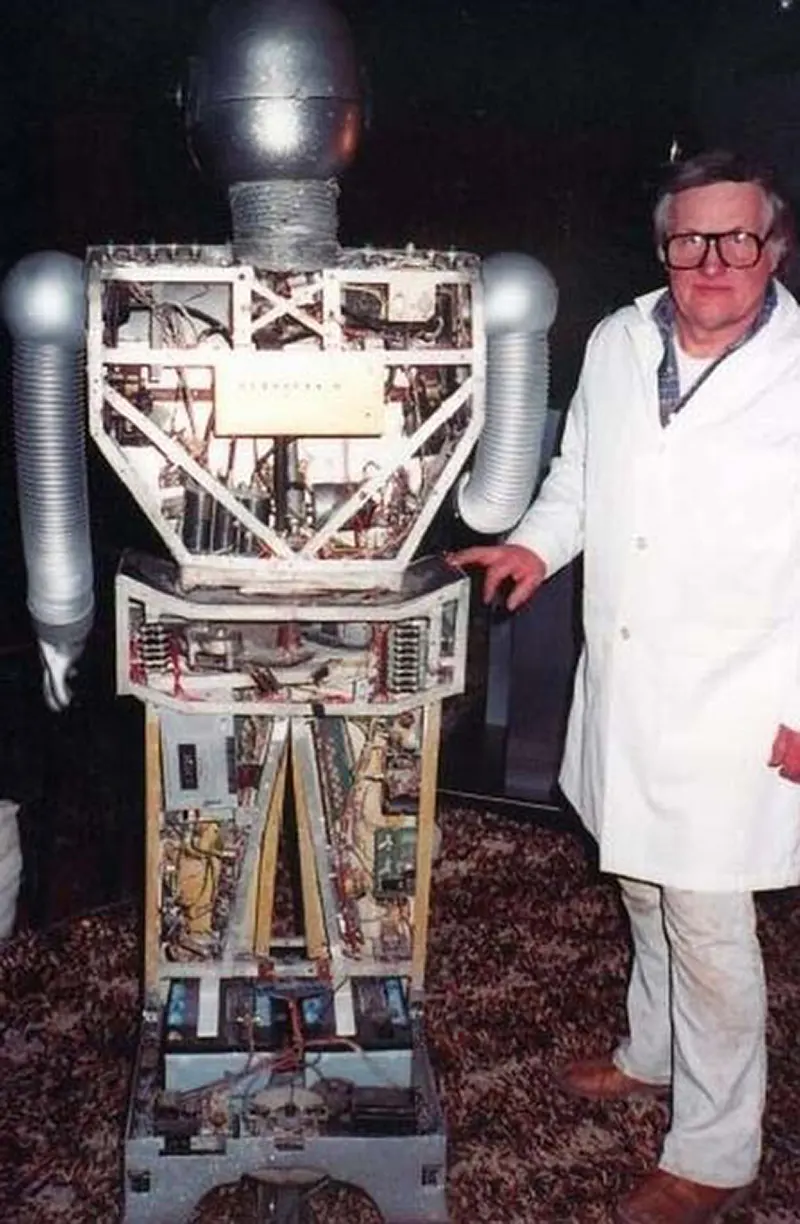
Ben Skora created AROK from 1969 to 1975 using ordinary, everyday details. Inside the aluminum body, the robot has two 12 V car batteries, 15 electronic motors, 35 relays and hundreds of semiconductor integrated circuits.
Instead of a skull he has a motorcycle helmet, instead of hands - an exhaust hose from a clothes dryer, and rubber gloves instead of hands. IN its control panel has a microphone and its head has a speaker. 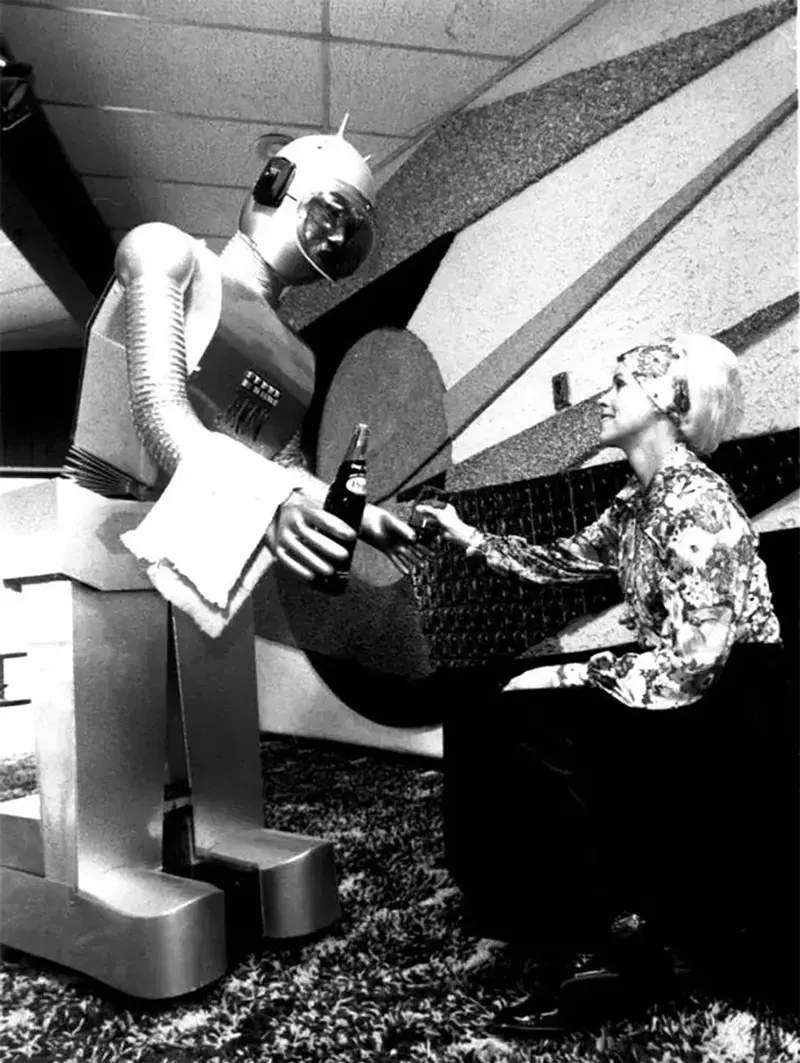
You can control it using the TV remote control using FM radio signals. One of two 12-volt car batteries provides power to the AROK, and the other drives the motors.
The batteries are located on platforms in the legs, and the drive mechanism is located in the base.
Robot Leonardo (1492) 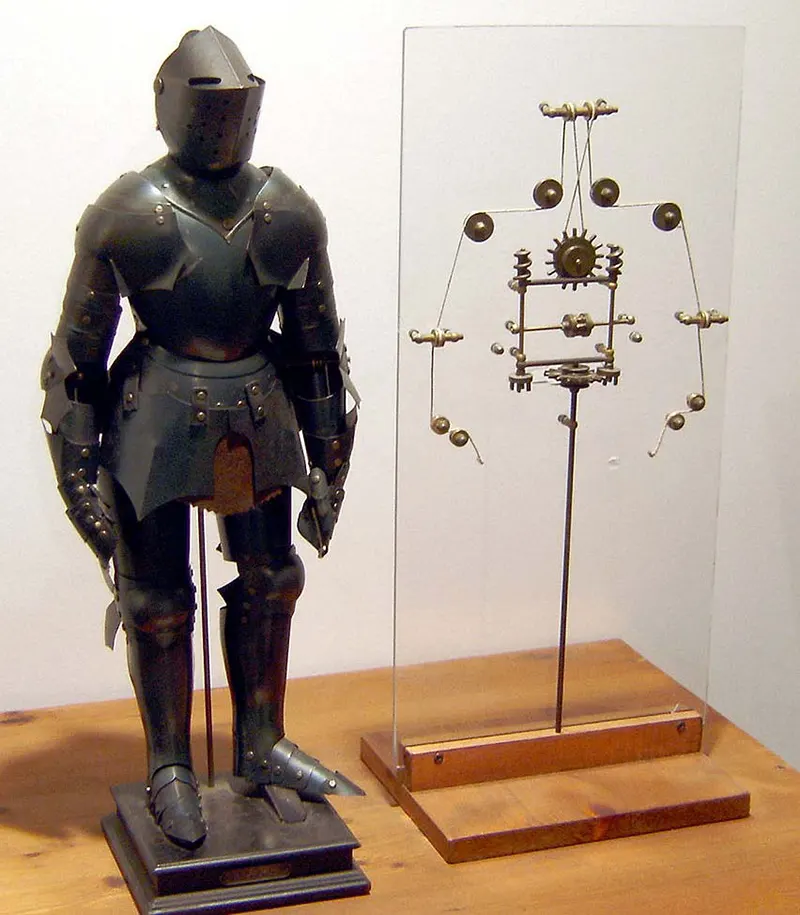
Leonardo robot model with internal structure. Probably invented by Leonardo da Vinci around 1495.
Notes on the robot project found in Leonardo's albums Vinci for painting, which were rediscovered in the 1950s. They say that Leonardo demonstrated the car at a festival held Ludovico Sforza at the Milanese court in 1495.
The robot knight could stand, sit, raise his visor and independently maneuver with his hands, and also had an anatomical correct jaw. The entire robotic system was controlled nearby pulleys and cables. After discovering the sketches, the robot was built exactly according to Leonardo's project and turned out to be fully functional.
Robot Maria from the film "Metropolis" (1927) 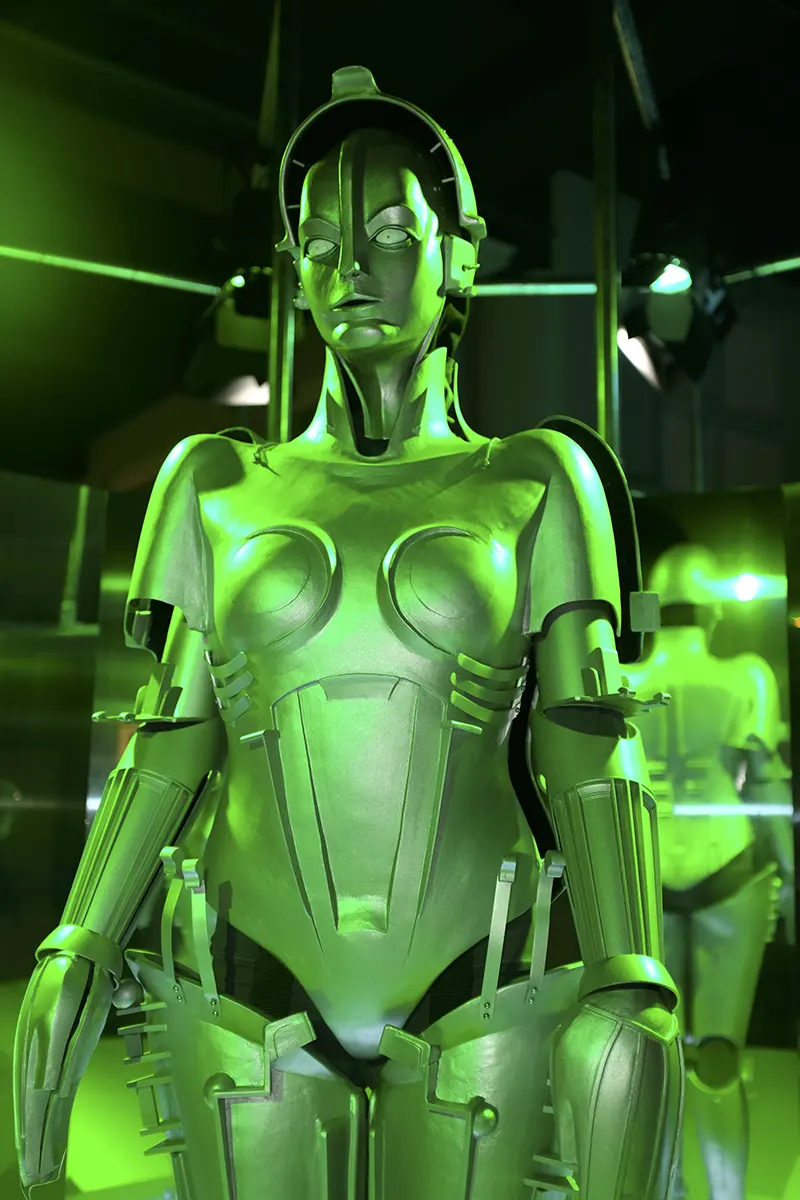
Metropolis, a silent science fiction film released in 1927, directed by Fritz Lang, introduced viewers to the iconic character, humanoid pboth named Maria.
Maria's appearance in Metropolis was truly ahead of its time time. She was a technological marvel, combining creative design with early methods of creating special effects. Maria's role in the film was to serve as a tool of manipulation and control. She was used to manipulate city metro workers and maintain status quo.












